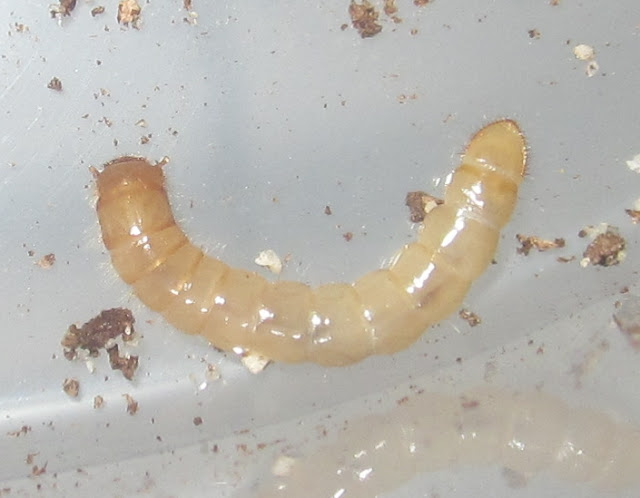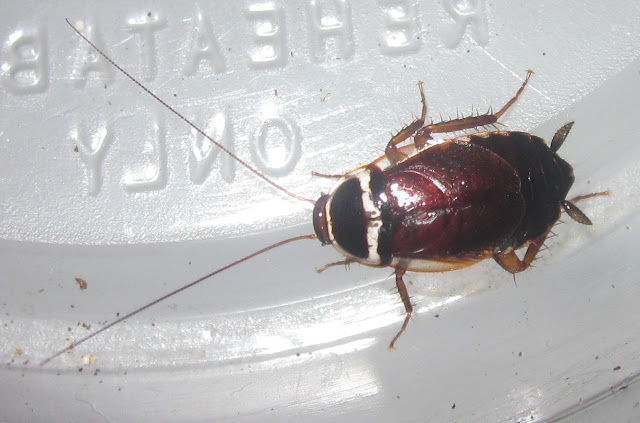First off, one of my Eucorydia forceps females matured! Unfortunately no males have matured yet, but with any luck one or two of the subadult males in there will molt soon and mate with my female (and hopefully more females will mature as well). Seems like the females are smaller than the males of this species, rather odd for this genus. The females also seem to be a rather dull metallic green, very dark, whereas from pictures I've seen, males are far more vibrant in coloration, with more blue iridescence as well.
Here are some pictures of the female:
Dark as females of this species may be, they're still very pretty roaches, with some neat setae "patterning" on their wings. I hope some more mature soon, (and that this female doesn't go to waste... 😅).
Next up, one of my Eucorydia linglong males has matured! Looks like I have multiple subadults of both sexes as well, so hopefully some females will pop out soon! I'd forgotten how pretty adults of this species were, such vibrant blues towards the tips of their wings.
No new pictures of these, because I'm too busy lol, but there are some pictures from last year on this post if you're interested.
Hopefully I'll do better with this species this generation, need to keep the adults warmer than last time for breeding for sure.
Now, in the most exciting Eucorydia news, THREE of my Eucorydia westwoodi males have matured, with one sub female looking like she'll mature within the next day or two, and at least two other sub females who should mature within the next few weeks. 😁 These are probably THE prettiest roach in culture ATM, the adults are so vibrantly colored, and they're also double to triple the size of most Eucorydia in culture!
Here are some pictures of one of the males:
Absolutely stunning, and they look even better in person! Can't wait to see some females mature here soon, hopefully I breed this species successfully!
Last but not least, I've got an adult male Euthyrrhapha pacifica already! 😊 Unfortunately, the other six sub/pre-sub nymphs are also males... 😐 However there are six smaller nymphs that I couldn't sex, so hopefully I'll have a pair in that small group... 🤞
But hey, at least I have an adult to get pictures of, so without further adieu:
Isn't he stunning? 😍 I really love this species a lot, though they are very small, maybe half the size of Eucorydia yasumatsui. The coloration/morphology on the adults more than makes up for it though. Hopefully I'll get some pairs maturing from my group of small nymphs soon so I can breed them, we'll see.
Anyways, that does it for this post, thanks for reading, hope everyone enjoyed, stay safe, and I'll see you all next time! 😉





























































